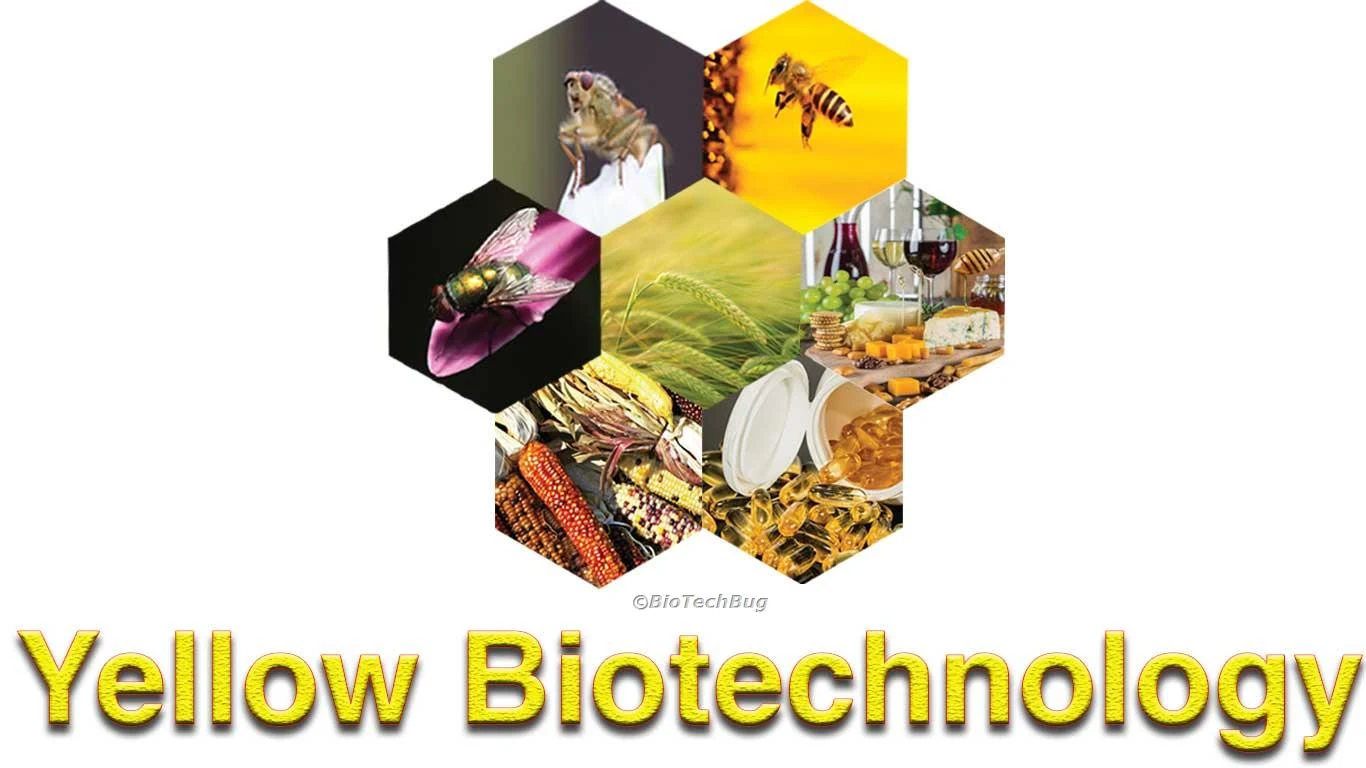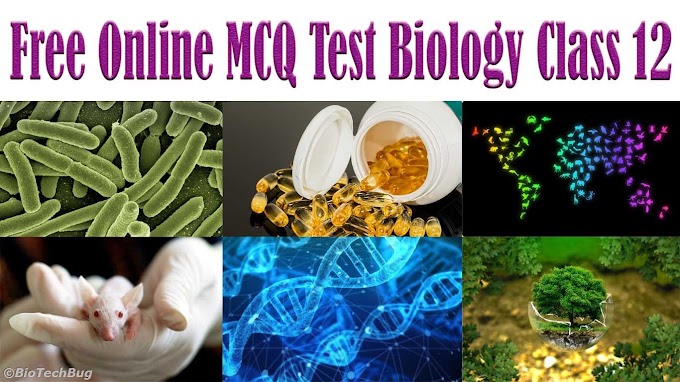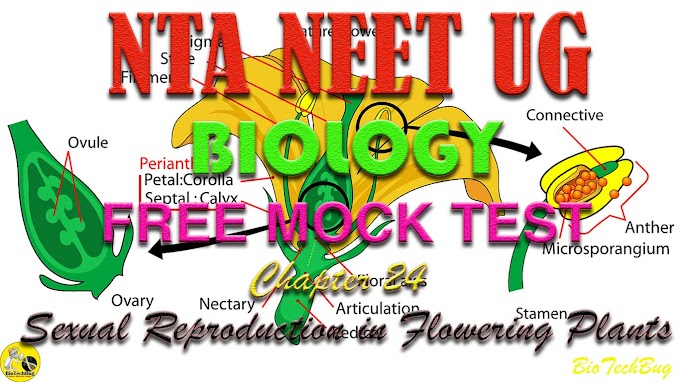Yellow Biotechnology can be said
as the oldest branch of Biotechnology. It uses microorganisms or insects for
the production of more nutrition-rich food products for us so Yellow
Biotechnology is also called Nutritional Biotechnology or Insect Biotechnology.
In other words, Yellow
Biotechnology is mainly the use of biotechnological techniques on insects or
their cells to develop different products or services that are used in
agriculture, medicine, and industry.
Traditional or conventional food
products are not so nutrition-rich so by using Biotechnological techniques like
gene modification, in-vitro cell culture technology, enzymatic and microbial
activity development of most nourishing food products that are fortified with
health-promoting additives fall under the Yellow Biotechnology.
Since ancient times humans use
microorganisms for the production of various food and beverages like curd,
bread, wine, beer, and cheese by using fermentation technology. But at that
time fermentation applications were focused only on the alcoholic fermentation
for the production of wine and beer.
Today due to the advancement of
Biotechnological techniques and gene modification techniques, Yellow
biotechnology involves in the development and production of various types of
food products that are high nutrition-rich value, most nourishing, fortified,
appropriate, and well-balanced diet.
Need of Yellow Biotechnology
Food production by traditional
methods is crop cultivation and meat production. Crop cultivation requires
large-scale land so it promotes the deforestation of forests. It also needed
clean water, fertilizers, pesticides, and other chemicals that directly pollute
land and groundwater to quality. Every year major part of the crop is lost due
to insects and the use of chemical insecticides harms our environment.
Meat production also requires
large-scale land, clean water, heavy feed, antibiotics, vaccines, hormones,
etc. Animal wastes and chemicals used in the meat production industry also
pollute land and water. The meat industry emits lots of greenhouse gases that
are responsible for global warming. Now it is challenging for scientists to
meet the increasing demand for food without harming the environment.
Goals of Yellow Biotechnology
The major goal of yellow
biotechnology is to providing high nutrient value quality foods to humans that
have health-promoting additives without harming (or polluting) the environment.
To achieve its goals yellow biotechnology uses various techniques like enzymatic,
microbial, and molecular biology genetics techniques. Under yellow
Biotechnology exploitation of Insects is done by using Biotechnological
techniques for enhancing the bio-economy.
Insects and Yellow Biotechnology
A few decades ago, insects are considered as the enemy for humans because insects destroy our crops, compete for food sources with us, and transmitted various diseases among us. But now due to applied Entomology and Biotechnological techniques, insects are now very useful for us. Insects are now used in the production of active ingredients that are used in agriculture, medical and industrial scale.
Insect-derived enzymes,
chitinases, cellulases, and Insect antenna-based Biosensors are the most common
example of the application of insects in food or nutritional biotechnology.
There are lots of potential
research areas of Insect Biotechnology like antimicrobial peptides (AMPs), the
red flour beetle model to study interactions between genes and food
ingredients, the fruit fly Drosophila to study aging, metabolic disorders, and
cancer.
You Should Read: What are the different colors of biotechnology?
Applications of Yellow Biotechnology
Insects have millions of species
and biodiversity. There are lots of things that we can learn from them for
example their natural abilities to digest various types of food sources and
defending mechanisms from various diseases and enemies.
By using their active ingredients
and enzymes, which they use to defend themselves we can explore novel sources
for nutrition and products that can be used for human welfare. The major applications
of Yellow Biotechnology are under the following heads.
1. Insect Derived Enzymes for White Biotechnology
Insects can eat any organic
products because they have specialized enzymes. These specialized enzymes can
be used for the food industry and waste management of organic products.
In the food and fermentation
industry, insect’s derived enzymes are commonly used for various purposes like
saccharification, degradation of gluten, cellulolytic enzyme, etc. Peptidases,
lipases, amylases, and β-D-glucosidases are the main insect’s derived enzymes.
2. Nutritional Food Production
Production of quality foods,
improvement, and nourishment by using technologies such fortification,
enzymatic, microbial, and GMOs.
Using fermentation technologies
for enhancing food aroma, taste, and nutrition quality. Storage and
preservation of food from the various harmful microbes and enhancing their
self-life.
3. Genetically Modified (GM) Crops
Genetic engineering is the main
tool for the removal and addition of particular gene codes in organisms,
plants, or animals. So by removing unwanted genes from the plants or animals
and the addition of useful genes provides more nutritious, healthy, and tasty
food.
Majorly grown agricultural crops
like maize, rice, wheat, paddy, tomato, eggplant, bean, cauliflower, potato,
apple, orange, etc. are already genetically modified and successfully grown at
the commercial level. Similarly, animals that are used for eggs and meat
production are also genetically modified for high-quality eggs and meat.
4. In-Vitro Cell Culture Technology
By using animal tissue culture
techniques test-tube meat was also produced. For the production of meat, in vitro
cell culture technology is used on adult cow stem cells.
5. Drugs from Insects
Lucilia sericata (common green
bottle fly) is used for the treatment of chronic or non-healing wounds. Larval
secretions of Lucilia sericata in-vitro were found to improve wound closure.
6. RNAi technology for Insect Pest Management
Insects are major pests that
affect the crop directly or indirectly and they are the major constraint to fulfill
global food demands. Traditional pest control strategies like chemical,
mechanical, biological, etc. have limitations. Using chemicals and pesticides
is harmful to the environment and for us. The use of existing transgenic approaches
also has certain limitations.
RNAi (RNA interference)
technology is sequence-specific silencing for the targeted gene is a naturally occurring
process in plants that provide defense against pathogens or pests. So
using RNAi technology we can control of maximum types of insects.
7. Insect Chitinases as Biopesticides
Chitinases isolated from the
insects such as tobacco hornworm, silkworm, Bombyx mori, Manduca sexta, etc.
Insect chitinases are used as the biological control agent for pest control either
alone or with combination insecticidal proteins like Bacillus thuringiensis.
You Should Try to Solve: Quiz on Colors of Biotechnology
Scope of Yellow Biotechnology
After Red, Green, and White
Biotechnology, Yellow Biotechnology is the major field of interest in the world
for the research under Biotechnology.
A lot of research work is needed on
insects for exploitation of their industrial and agriculture applications to
provide nutritional food to all. So to meet the increasing demand for food
without harming our environment can be solved by using it.
Recommended Books on Yellow Biotechnology
If you want to study in deep and understand Yellow Biotechnology in detail then we can recommend some books on Yellow Biotechnology that you should study.






